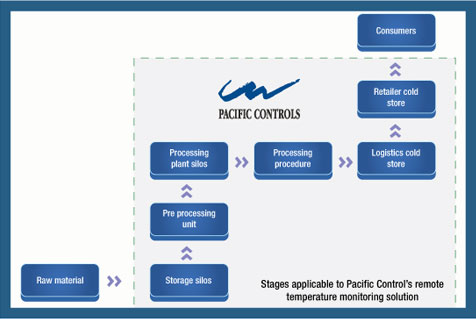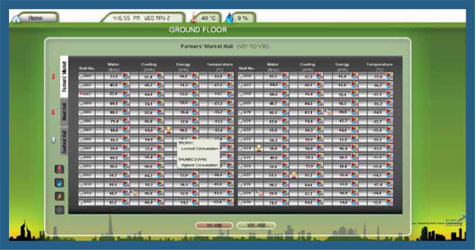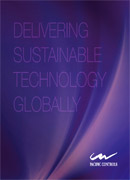
Food Supply Chain
Location tracking of goods and vehicles, traceability solutions for managing fresh food inventory, including barcode labelling and tagging, monitoring solutions to check temperature & hunidity of food storage and more

Food production and distribution is one of the world’s largest, most important and complex supply chains connecting three main sectors: the agriculture sector, the food processing industry and the distribution sector. It is composed of farmers, wholesalers, processors, distributors and retailers, all of whom operate in different markets across the globe and sell a huge variety of food products, many of them seasonal. Regulation affects the food supply chain at all levels. The degree of market power held by the firms along the chain varies by product category, depending on the relevant markets in which these firms operate. This has an impact on the contractual relationships between the main players and influences how far increases in agricultural commodity prices translate to increases in consumer prices.
Ensuring the Safety of Food Supply Brings Many Challenges

This complex supply chain inevitably brings many challenges, including:
- The need for reliable forecasting of demand: poor forecasting of food requirements in a community can lead to scarcity; improved forecasting can eliminate shortages.
- Ensuring food sanitation protocols are followed to prevent contamination, including making sure handlers follow hygiene rules and store perishable foods at the right temperature: milk, cottage cheese, sour cream, ice cream, meat, pork, chicken and seafood will spoil within hours without refrigeration or freezing.
- Ensuring that food served hot is hot enough throughout to prevent bacteria from multiplying.
- Prevention of theft, which remains a significant supply chain challenge at every step from the farm shipment to the retailer. Groups of thieves are known to track truck shipments and seize on opportunities to strike. Once a truck is heisted, the thieves quickly paint-over all markings and move the goods through backroom and secondary market channels. The Financial Times recently estimated theft losses among U.S. retailers to be in the range of $8–30 billion.
- Maintaining food quality, which fundamentally depends on the farmers but can also be reduced by poor storage, packaging and preparation.
- Protecting against pests which reduce crop yields and which attack food in transit and storage, resulting in waste.
- Adjusting to seasonal supply and demand. Many crops are only available at certain times of the year, while weather, holidays, special events and paydays all contribute to short-term spikes in demand.
Food Supply Chain Solutions

The challenge of ensuring that food deliveries are safe and in good condition has resulted in widespread use of ICT to guarantee that the process of warehouse bookings, receiving, transfers, load plans, picking and inventories is reliable. The EU believes that use of ICT in the US results in food processing and supply chain productivity up to 3.5 percentage points higher than in the EU, and that use of ICT is partly responsible for the wide variations in productivity between EU countries. ICT can also be used to improve the sustainability of food supply, offering companies operating within the food industry unparalleled opportunities for competitive advantage and thought leadership.
Some of the ICT solutions that can address the challenges of the food supply chain include:
- Location tracking of goods and vehicles, using GPS and radio frequency identification (RFID) tags, which can speed deliveries and prevent theft.
- Traceability solutions for managing fresh food inventory, including barcode labelling and tagging, food safety tracking, sustainability, pesticide application documentation, and general record keeping.
- Monitoring solutions that check temperature and humidity of food storage and transit environments to ensure that they are kept within the defined range to minimise spoilage.
- Pest control and prevention tools that include the use of GPS to track infestations and identify areas at risk and knowledge sharing to provide instant advice on dealing with infestations as they occur.
- ICT to support food sanitation protocols by improving the efficiency of food handling procedures, providing detailed information on the origin and history of any food that is found to be contaminated and improving information given to consumers.
- Operations and facility management tools that can be used to optimise processes, monitor premises and ensure that food moves swiftly from producer to consumer.
Pacific Controls Managed Services for Food Supply Solutions Vendors
Pacific Controls ICT enabled managed services for business process integration are an end-to-end enterprise solution that puts the power of ubiquitous computing at the service of the food supply chain. They improve process efficiency and the reliability of equipment to ensure optimum performance for all links in the value chain, as shown in Figure 17.
The M2M solution provides the middleware and software that links a myriad of sensors with mission critical applications, including the client’s existing ERP system. Developments in communication technology mean it will soon be possible to track goods down to their pick-up or drop-off location; even confirm delivery and make payments using M2M technology.
The service modules include:
- Vehicle Tracking Solutions (described in detail in section6) that allow fleet managers to see the real time location of an entire fleet of vehicles on a web browser screen at any time. Detailed fleet records accurately record each vehicle’s activities throughout the day, including:
- Duration of each job delivery or stop
- Identifying when inefficient routes are being used
- Identifying vehicle usage out of business hours
- Monitoring exact times that vehicles enter and leave key job sites
- Identifying stops at non-work-related sites
- Ability to track stolen vehicles and to instigate fastest recovery of the vehicle
- Analyse excessive speed, harsh braking and harsh acceleration for each driver in order to improve fuel efficiency and reduce the risk of accidents.
- Data mining and forecasting tools that allow projection of demand from the history of units shipped, the weather and holiday dates, that help to optimise critical processes.
- Environmental controls for buildings and refrigeration equipment to ensure that temperature and humidity are kept at the right levels for food storage. Tags that indicate the temperature and humidity required by a perishable item can be used to ensure that the correct environment is maintained in its location, reducing waste.
- GPS tools for managing information by region for tasks such as demand forecasting, pest control and optimising logistics.
- Maintenance management and an FDD module to ensure that everything is running at peak performance and breakdowns are very rare.
- Ability to control equipment and processes remotely, in real time, using Gbots: software robots, deployed across networks for connecting smart devices and buildings to IT infrastructure and enterprise systems. This allows the continuous commissioning of equipment to optimise its operation.
- Integration of all the data on a single platform. Pacific Controls Galaxy cloud platform is a robust managed services platform that handles enormous volumes of M2M data and allows operations and facilities managers to measure and fine-tune resource usage to realise significant cost savings. The framework can combine ‘big picture’ issues, such as overall energy supply and balance, projected national and international demand, environmental impact and sustainability with the minutiae of business management, including costs (direct and indirect) and potential efficiencies.
Benefits for Vendors of Food Supply Chain Automation
Manufacturers of refrigeration equipment and tracking, tracing and monitoring solutions can use Pacific Controls Managed Services for Critical Assets Monitoring to offer services that guarantee products are kept at the right temperature, that storage times are not exceeded, that any spoiled items are identified and removed expeditiously and that food is protected from pests and from theft. Continuous monitoring ensures that food is stored safely at all times and that equipment does not fail. Suppliers can continuously commission their equipment in any location to minimise its power consumption and provide preventive maintenance services using Galaxy’s predictive capabilities.
Pacific Controls managed services deliver a number of benefits to suppliers of food supply chain automation. Remote and real-time monitoring of vehicles and goods in the supply chain provides a complete picture from the GCCC showing the location of goods and vehicles and giving early warning of a machine breakdown. Workflow procedures can be improved by analysing historical performance and identifying areas where change is needed. Operation and maintenance cost is reduced using Pacific Controls’ managed services for maintenance management, which ensure equipment is serviced before it breaks down. Remote troubleshooting reduces maintenance costs further, using the unique Gbots that are able to test and restart any computerised equipment in the supply chain management systems anywhere in the world.
Suppliers can improve the reliability of equipment and processes through analysing detailed real time information. Pacific Controls can track down the cause of any problems in the historical data for a vehicle or an item. For example, if a vehicle did not arrive on time in a particular location, the system can trace the history of its starts and stops and the route that the driver has taken. The service reduces the volume of waste and the consequent financial loss by preventing food spoilage through tight control at every stage.
Benefits for Food Retailers
Food retailers benefit from less wasted food in transit and storage, fresher produce for sale and faster deliveries that allow them to respond more quickly to fluctuations in demand. Profitability can be improved if technology can identify damaged products for removal so that other products are not spoiled while being kept in stock. They gain improved forecasting of requirements and more predictable supplies. Maintenance costs are reduced, for HVAC systems, storage and refrigeration facilities.

